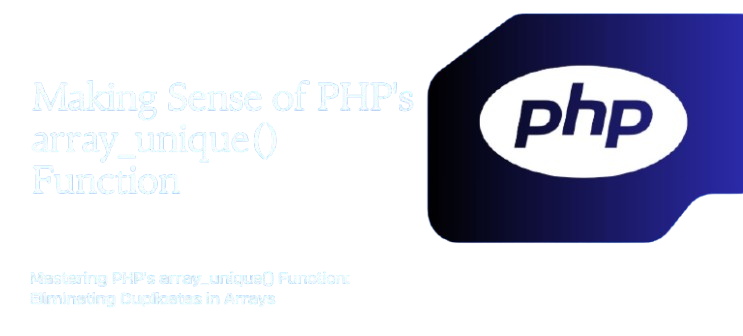Whether you're a beginner stepping into the world of PHP or a developer brushing up on fundamentals, understanding how to work with arrays, loops, and conditional statements is key to writing efficient and scalable code. In this blog post, we’ll explore essential tips and tricks for handling PHP arrays and uncover the true power of loops and conditional logic in real-world programming.
Let’s dive into the building blocks that shape almost every PHP application — and help you write cleaner, smarter code.
PHP Arrays: Your Data Powerhouse - 🔍
Arrays are fundamental to PHP — they let you store multiple values in a single variable. You’ll use them in practically every application, whether you're handling form data, managing database results, or building dynamic content.
Types of Arrays:
. Indexed Arrays: Store values with numeric indexes.
. Associative Arrays: Use named keys for more meaningful access.
. Multidimensional Arrays: Handle tabular or nested data structures.
. Use print_r() or var_dump() for debugging complex arrays.
. Leverage array_map() and array_filter() for clean, functional programming.
Use isset() or array_key_exists() to safely check array keys.
. Sort your arrays with asort(), ksort(), or usort() depending on your needs.
Arrays become especially powerful when combined with loops and conditional logic — which brings us to the next topic.
Mastering Loops in PHP 🔄
Loops allow you to execute blocks of code repeatedly, making them perfect for working with arrays, generating dynamic content, or processing data sets.
. Types of Loops:
. for loop: Ideal for running code a set number of times.
. foreach loop: Best for iterating over arrays.
. while and do...while loops: Useful when the number of iterations is unknown.
Best Practices:
. Always define your loop exit condition to avoid infinite loops.
. Break large tasks into smaller loops for clarity and efficiency.
Use continue and break to control loop execution smartly.
Loops become even more dynamic when used with conditional statements.
Conditional Statements: Adding Logic to Your Code - 🔧
Conditional statements allow your code to make decisions based on conditions — they’re essential for writing dynamic and intelligent applications.
Common Conditions:
. if, else, elseif: Basic condition handling.
. switch: Efficient for multiple-choice decisions.
. Avoid deeply nested if-else structures for better readability.
. Use strict comparisons (===) to avoid unexpected type coercion.
Group related conditions using logical operators like && and ||.
When combined with arrays and loops, conditional statements allow you to build smart logic — like validating form data, filtering records, or displaying content based on user actions.
Conclusion
Mastering PHP arrays, loops, and conditional statements will give you the confidence to build powerful and efficient applications. These tools are the backbone of dynamic web development and play a critical role in nearly every project.
At Hoopsiper, we believe in simplifying complex programming concepts into actionable knowledge. This blog, written by — Shashank Shekhar, is just one of many guides you’ll find here to support your journey in coding and beyond.
For more PHP tutorials, web development tips, and hands-on coding tricks, keep following Hoopsiper!


